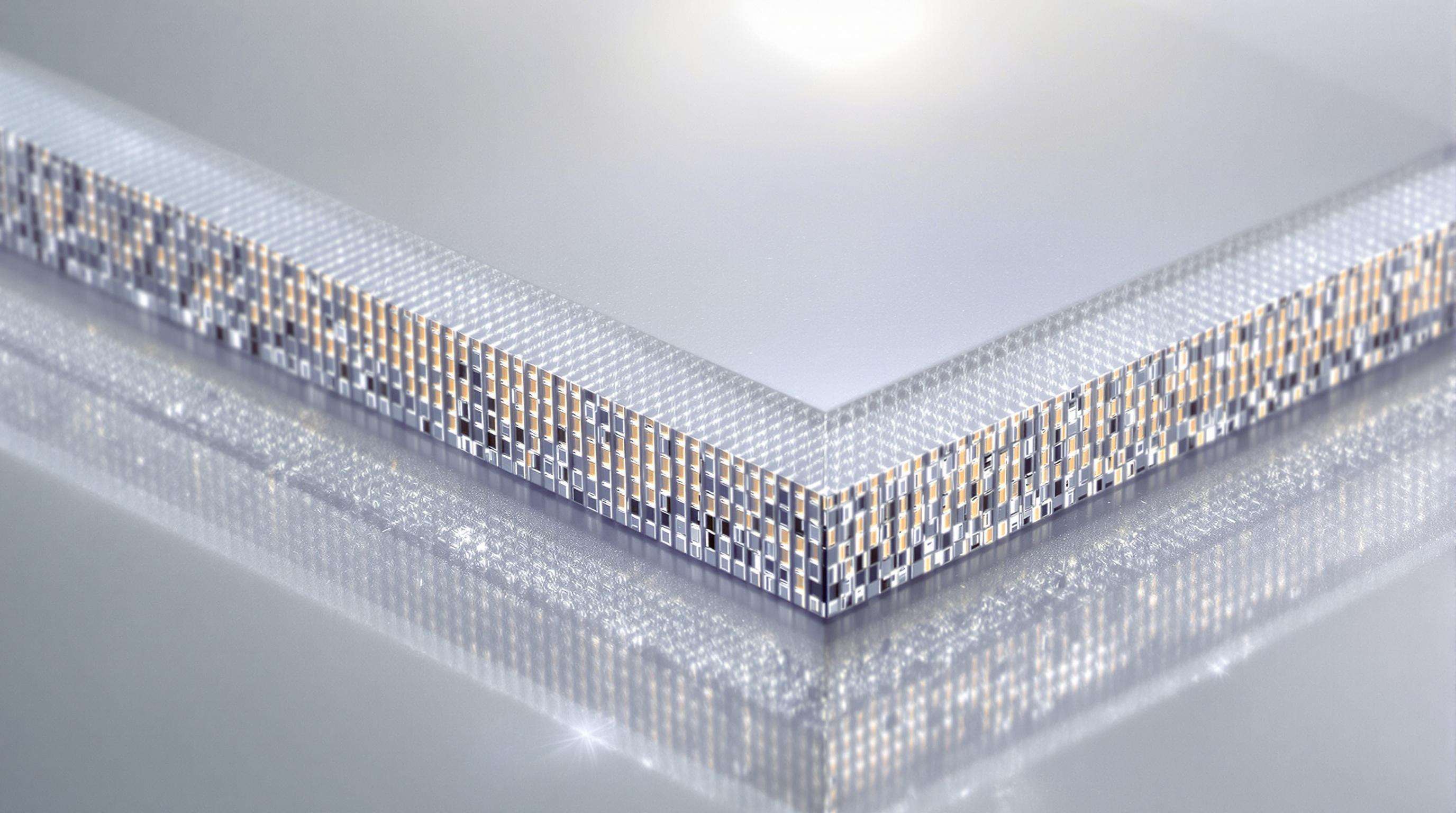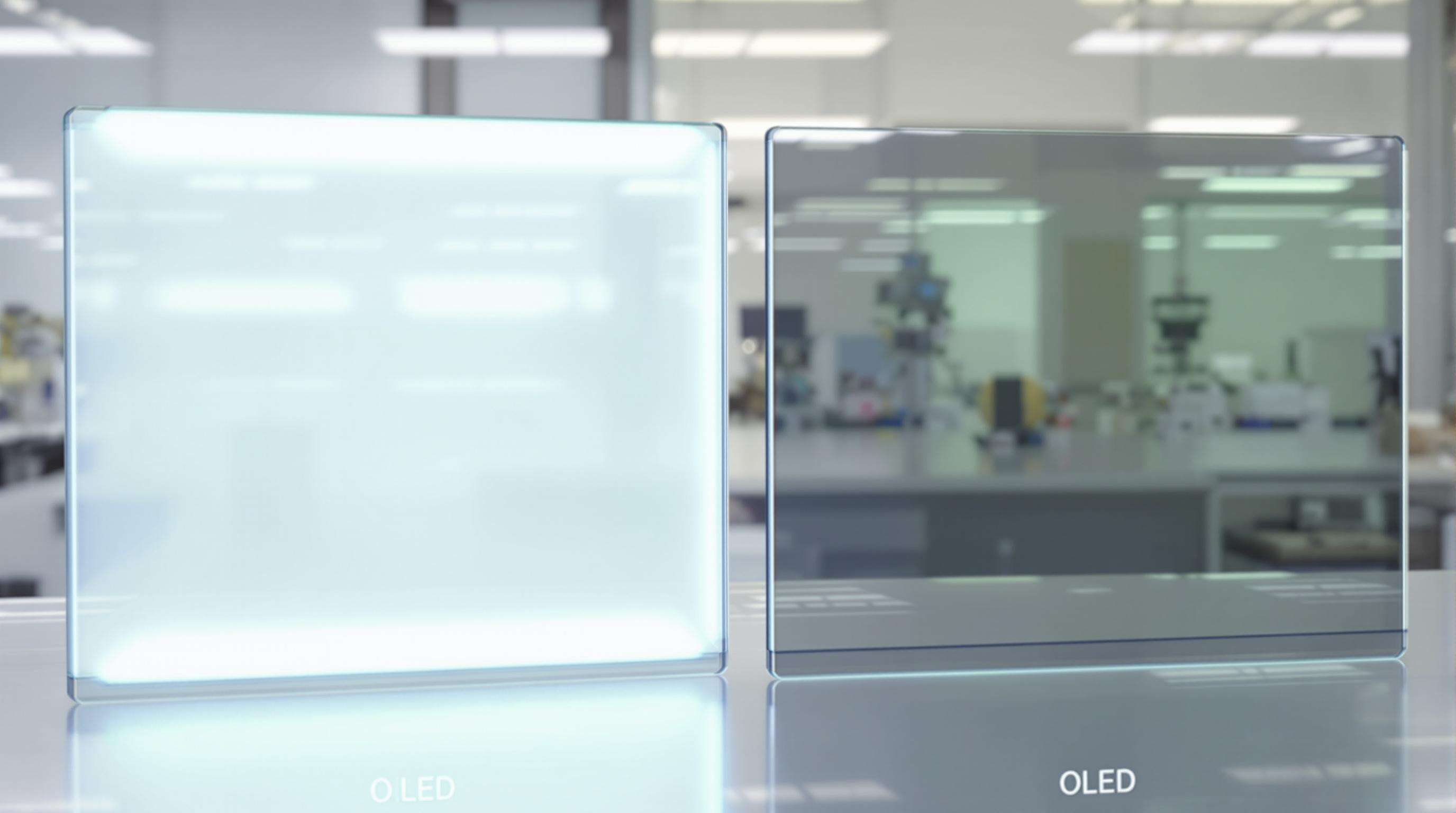
Optical transmittance is a relative measure of the amount of light which is transmitted through display panels. For transparent LED, high density pixels (pixel pitch 2.0mm, 2.5mm, 3.0mm) and special material gap, which the light permeation ratio reach over 85% as laminated glass. Precision alignment of the microscopic OLED and color filters eliminates the need for a backlight, while maintaining superior image resolution and screen bean (400-1,500 nit) Outputs.
The performance of transparent displays is highly depended on the progress of cathode materials. State-of-the-art silver nanowire grids provide >90% conductivity with >80% visible light transmission, surpassing conventional ITO solutions. New graphene-hybrid cathodes are 70% transparent and pare back power usage by 40% (Emerging Materials Review 2024). These ultra thin nanomaterials are a perfect match for architectural glass, and withstand UV degradation, thus to create infinite possibilities for ultra thin, sub 5mm, flexible displays that bend into corners.
| Material Breakthrough | Light Transmission | Conductivity Gain | Power Reduction |
|---|---|---|---|
| Silver Nanowire Grids | >80% | 90% efficiency | 25-30% |
| Graphene-Hybrid Electrodes | ~70% | 85% efficiency | 40%+ |
| Micro-Mesh Conductive Film | 75-82% | 88% efficiency | 35% |
Retailers use transparent LED screens to transform static storefronts into interactive brand experiences. These displays project dynamic promotions while maintaining full product visibility, boosting foot traffic by 37% within three months of installation. Real-time content flexibility allows rapid campaign adjustments during peak shopping hours.
Cultural institutions integrate transparent LED solutions to overlay historical narratives onto artifacts without physical obstruction, increasing visitor engagement by 43% (TechImpact 2023 corporate reports). Corporate lobbies deploy the technology in glass partitions to showcase brand messaging while preserving architectural flow.
Event planners using transparent LED backdrops report:
The displays' dual-sided capability optimizes installation footprints, enabling simultaneous audience messaging in convention spaces.

It is nothing short of a major challenge to propose a display with a luminance level which is as high as 87.4% as well as wide optical transparency. At normal transparency, micro LED panels maintain increased brightness but suffer from 20-25% luminance decreases compared to the 87.4% baseline. Recent research has shown that when the high-transparency level is reached Micro LED’s brightness exceeds that of OLED by up to 38-45 percent, and its LED brightness is supported by non-organic system like Micro LED, preventing decay and support illuminance cycle.
OLED technology prioritizes transparency through organic compound engineering but maxes out at around 600 nits due to fragile organic stacks. Micro LED maintains critical advantages in daylight visibility and energy efficiency, consuming 33% less power than OLED at equivalent brightness thresholds above 85% transparency.
Transparency-Brightness Curve: Illustrates inverse correlation (X-axis: Transparency %, Y-axis: Brightness (nits)). Micro LED curves show 38% luminance advantage over OLED beyond 85% transparency.
Effective storefront integration requires balancing technical precision with architectural aesthetics.
Back-to-back configurations enable dual-sided visibility but demand meticulous transparency calibration. Power management systems must compensate for dual-layer energy draw, often requiring 25-30% higher heat dissipation capacity. Micro-perforated aluminum panels (0.8-1.2mm pitch) are increasingly used for their 87% open area ratio, allowing airflow while distributing structural load.
Transparent fenestration elements must not exceed the frame loads (â¤4.8 psf for reinforced glass facades) and integrate with curtain wall geometries. Regulations stipulate that <600-nit nighttime brightness be used for installations on street-facing facades, to prevent light pollution. Vibration-resistant (IP54-rated) while strong performance is also provided by impact resistance films in high-traffic areas *2, where 92 % of micro-cracking risks are reduced.
Two-sided media types create a dynamic effect using the two opposing images seen on opposing surfaces of one display. This method increases the dwell time by 43% more than static signs, since it supports context-aware notices. Incorporating augmented reality (AR) into transparent surfaces can overlay virtually displayed information on physical environments, providing more dynamic and interactive interactions in retail and cultural places.
Manufacturers are pioneering ultra-thin light-emitting films for seamless integration into curved architectural surfaces, transforming ordinary surfaces like vehicle windshields or building columns into dynamic information canvases.
Transparent LED displays will offer a tangible return on investment as they deliver increased consumer engagement at the risk of invasive tactics if not handled carefully. Dwell time increases are monitored by retailers (outrlasting static displays on average about 30-45 seconds longer) and conversion lift (an average of 15-20% in 2024 visual merchandising studies on average). Calibrated brightness by strategy and motion triggered content activation works to easy customer scare-off without losing interest. The tipping point for further adoption will depend on normalization of intrusion-index metrics and enabling content algorithms that are sensitivity adjusted to retain brand sentiment.
Micro LED technology offers significant advantages in brightness and energy efficiency over OLED. Micro LEDs provide up to 38-45 percent brighter displays than OLED at high transparency levels and consume 33% less power, making them suitable for daylight visibility.
Optical transmittance in transparent LED displays is achieved through precise alignment of microscopic OLEDs and color filters coupled with special material gaps, allowing over 85% light permeation ratio similar to laminated glass.
Transparent cathode materials like silver nanowire grids and graphene-hybrid electrodes significantly enhance display performance by offering high conductivity and visible light transmission, reducing power usage and providing durability.
Retailers benefit from transparent LED displays by transforming static storefronts into engaging, interactive brand experiences, boosting foot traffic and allowing real-time content updates during peak shopping hours.
Challenges in storefront integration include balancing technical precision with architectural aesthetics, transparency calibration for dual-sided visibility, and ensuring structural compatibility without exceeding frame loads or causing light pollution.